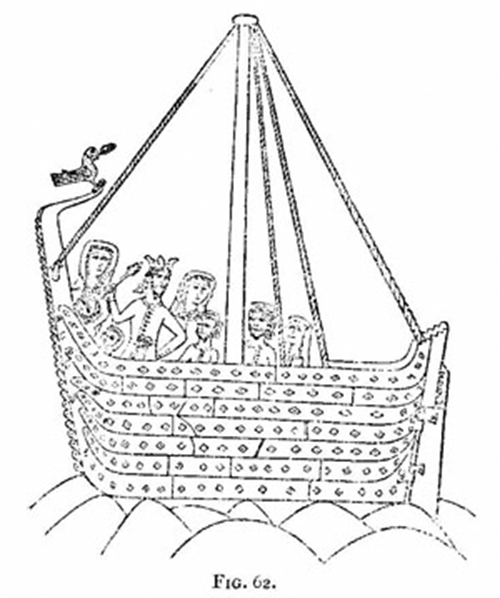Book of Hymns
From A Smaller Social History of Ancient Ireland 1906
« previous page | contents | start of chapter | next chapter »
CHAPTER IX....concluded
The Book of Hymns is one of the manuscripts in Trinity College, Dublin, copied at some time not later than the ninth or tenth century. It consists of a number of hymns—some in Latin, some in Irish —composed by the primitive saints of Ireland—St. Sechnall, St. Ultan, St. Cummain Fada, St. Columba, and others—with Prefaces, Glosses, and Commentaries, mostly in Irish, by ancient copyists and editors. It has been published in two editions; one by the Rev. Dr. Todd; the other by the Rev. Dr. Bernard, F.T.C.D., and Dr. Robert Atkinson.
Another ecclesiastical relic belonging to Ireland should be mentioned—the Antiphonary, or Hymn Book, of St. Comgall's monastery of Bangor, in the County Down, written in this monastery about A.D. 680. In order to save it from certain destruction by the Danes, it was brought to the Continent, probably by the learned monk Dungal, already mentioned (page 194). After lying hidden and neglected for a thousand years, it was found at last in Bobbio; and it has since been several times published.
There are manuscripts on various other ecclesiastical subjects scattered through libraries—canons and rules of monastic life, prayers and litanies, hymns, sermons, explanations of the Christian mysteries, commentaries on the Scriptures, &c.—many very ancient. Of the numerous modem writings of this class, I will specify only two, written in classical modern Irish about the year 1630 by the Rev. Geoffrey Keating:—the "Key-shield of the Mass" and the "Three Shafts of Death." This last has been edited with a Glossary, but without translation, by Dr. Robert Atkinson.
These are only a few of the existing Irish ecclesiastical works: there are many others in the libraries of Great Britain and the Continent.
FIG. 62. Noah's Ark: reduced from the larger sketch on a flyleaf of the Book of Ballymote. (From Kilk. Archaeol. Journ.).
Writers of sacred history sometimes illustrated their narratives with rude pen-and-ink sketches of Biblical subjects, of which an example is given here—a quaint figure of Noah's Ark drawn on a fly-leaf of the Book of Ballymote in the fourteenth century.
END OF CHAPTER IX.
« previous page | contents | start of chapter | next chapter »

